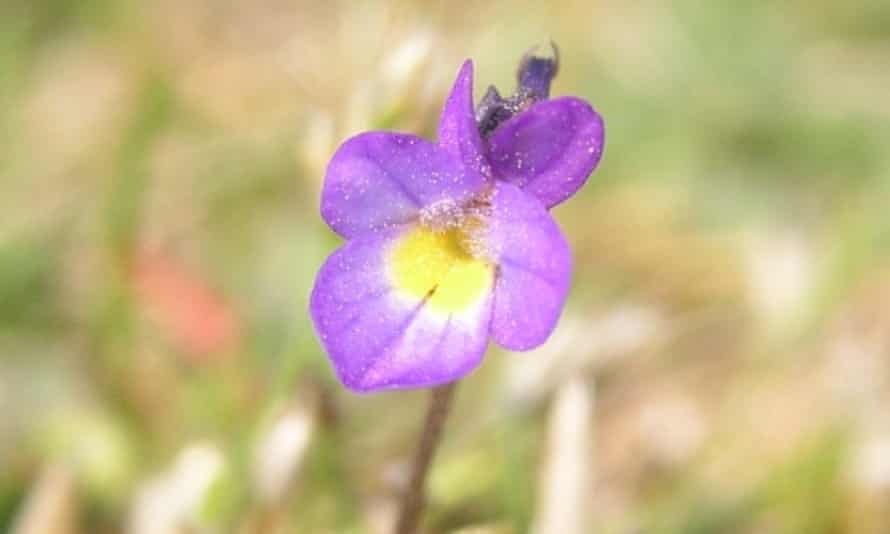The tiny island of Tean was once home to a single resident, a modest chapel, diminutive grazed fields and a dwarf pansy smaller than the tip of a pencil.
All these things vanished from the 0.16 sq km Scilly island in the years after it was abandoned by humans seeking larger things.
But now the dwarf pansy (Viola kitaibeliana), which is found nowhere in Britain apart from on the Isles of Scilly archipelago, has returned to flower again after an absence of 16 summers.
The pansy was discovered by rangers for the Isles of Scilly Wildlife Trust, who have taken a boat to Tean every autumn and spring for the past seven years to cut back bracken and gorse in parts of the island where it was once found.
The pansy, an annual which spreads its seeds after flowering each year, requires short, well-grazed or regularly disturbed turf in which to prosper.
Tean was grazed by livestock until the second world war, but the abandonment of grazing alongside the disappearance of rabbits from the island made life more difficult for the dwarf pansy.
Seeds from its last confirmed flowering in 2004 lay dormant in Tean’s sandy soil for years until conditions created by the rangers were suitable for it to germinate again.

Darren Mason, head ranger, said: “I can’t quite believe it, I’m absolutely stoked.
“The dwarf pansy is found on small sites on Tresco and Bryher as well but both of those sites are affected by sea level rise and coastal erosion, so we needed to do the work on Tean to secure the future for this rare species.”
The removal of bracken, coarse grasses and scrub from maritime grassland areas of Tean has also boosted other wildflowers including changing forget-me-not, Portland spurge and lady’s bedstraw.
Rangers discovered just two flowering pansies this spring but will extend their surveying of the island to see if it spreads further.
“Now it is flowering again that will set the seed and we’re hoping it will continue to spread further afield on Tean,” said Mason.
With its balmy, maritime climate, Scilly, positioned 28 miles beyond Land’s End, is home to a number of species found nowhere on mainland Britain, including the lesser white-toothed shrew, orange bird’s foot and gilt-edged lichen, which is a critically endangered plant.
Although some areas of Tean are out of bounds during the April-September bird nesting season, it is possible for visitors to reach the island – if they can find a boat to take them – although the dwarf pansy will not be flowering again until next spring.
“People can see the pansy,” said Mason, “if they are willing to get down on their hands and knees and search for it.”